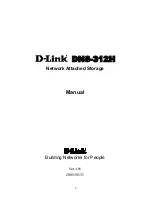
Chapter 6 Network Address Translation (NAT) Screens
P-660R-F1 Series User’s Guide
76
6.1.2 What NAT Does
In the simplest form, NAT changes the source IP address in a packet received from a subscriber
(the inside local address) to another (the inside global address) before forwarding the packet to the
WAN side. When the response comes back, NAT translates the destination address (the inside
global address) back to the inside local address before forwarding it to the original inside host. Note
that the IP address (either local or global) of an outside host is never changed.
The global IP addresses for the inside hosts can be either static or dynamically assigned by the ISP.
In addition, you can designate servers, for example, a web server and a telnet server, on your local
network and make them accessible to the outside world. If you do not define any servers (for Many-
to-One and Many-to-Many Overload mapping – see
), NAT offers the additional
benefit of firewall protection. With no servers defined, your ZyXEL Device filters out all incoming
inquiries, thus preventing intruders from probing your network. For more information on IP address
translation, refer to
RFC 1631
,
The IP Network Address Translator (NAT)
.
6.1.3 How NAT Works
Each packet has two addresses – a source address and a destination address. For outgoing packets,
the ILA (Inside Local Address) is the source address on the LAN, and the IGA (Inside Global
Address) is the source address on the WAN. For incoming packets, the ILA is the destination
address on the LAN, and the IGA is the destination address on the WAN. NAT maps private (local)
IP addresses to globally unique ones required for communication with hosts on other networks. It
replaces the original IP source address (and TCP or UDP source port numbers for Many-to-One and
Many-to-Many Overload NAT mapping) in each packet and then forwards it to the Internet. The
ZyXEL Device keeps track of the original addresses and port numbers so incoming reply packets can
have their original values restored. The following figure illustrates this.
Figure 40
How NAT Works
Summary of Contents for P-660R-F1 series
Page 2: ......
Page 8: ...Certifications P 660R F1 Series User s Guide 8 ...
Page 16: ...P 660R F1 Series User s Guide 16 ...
Page 18: ...P 660R F1 Series User s Guide 18 ...
Page 62: ...Chapter 4 WAN Setup P 660R F1 Series User s Guide 62 ...
Page 104: ...Chapter 7 Firewalls P 660R F1 Series User s Guide 104 ...
Page 140: ...Chapter 9 Certificates P 660R F1 Series User s Guide 140 ...
Page 144: ...Chapter 10 Static Route P 660R F1 Series User s Guide 144 ...
Page 162: ...Chapter 12 Dynamic DNS Setup P 660R F1 Series User s Guide 162 ...
Page 190: ...Chapter 15 System P 660R F1 Series User s Guide 190 ...
Page 204: ...Chapter 16 Logs P 660R F1 Series User s Guide 204 ...
Page 212: ...Chapter 18 Diagnostic P 660R F1 Series User s Guide 212 ...
Page 216: ...Chapter 19 Troubleshooting P 660R F1 Series User s Guide 216 ...
Page 220: ...P 660R F1 Series User s Guide 220 ...
Page 222: ...P 660R F1 Series User s Guide 222 ...
Page 246: ...P 660R F1 Series User s Guide 246 ...
Page 250: ...P 660R F1 Series User s Guide 250 ...
Page 258: ...P 660R F1 Series User s Guide 258 3 Click OK to close the window Figure 172 Java Sun ...
Page 266: ...P 660R F1 Series User s Guide 266 ...
Page 267: ...P 660R F1 Series User s Guide 267 ...
Page 268: ...P 660R F1 Series User s Guide 268 ...
















































